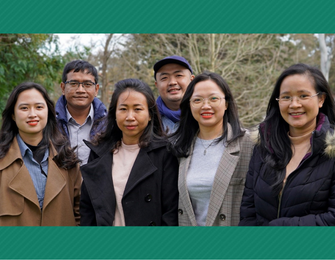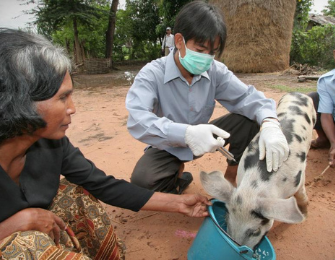In Myanmar, a national Public Health Emergency Operations Centre (PHEOC) and two sub-national level PHEOCs in the Yangon and Mandalay Regions will be established within an appropriate legal framework. A strengthened notifiable diseases surveillance system, disease-specific standard operating procedures and up to 100 trained staff will be available to support the efficient running of emergency operations centre.
In Laos, the project will deliver improved and expanded national and sub-national electronic surveillance tools for decision makers to use to monitor the spread of infectious diseases. These tools will be used by emergency operations centres continuously in malaria-elimination mode. This use of the system for malaria elimination will allow teams and staff to become familiar with the rigorous detection and response processes, enabling its use for any further emergencies that may arise. The project is currently finalising its plan of work in Cambodia, more information will be available soon.
Logistics and Operating Procedures and Workforce in Myanmar
The project will work with the government of Myanmar to develop the necessary documents, tools, standard operating procedures, and legal frameworks for a functioning emergency operations centre. This will include: facilitating planning and budgeting for the emergency operations centre; establishing an incident management system; and developing a concept of operations and disease-specific standard operating procedures and emergency response plans. The program will coordinate with partners and government agencies to strengthen laboratory facilities.
In addition, there will also be renovation and limited infrastructure improvements to ensure emergency operations centre sites are fit-for-purpose.
Strengthening real-time surveillance in Myanmar
The project will strengthen the existing Ministry of Health notifiable disease surveillance system by extending some of its functions. A dashboard function will be added to make the system more accessible and user-friendly, enabling better disease surveillance and make weekly reporting possible.
A surveillance system will be established with selected private sector GPs. Dedicated PHEOC staff will become ‘train-the-trainers’ to lead additional trainings and provide supportive supervision on the updated surveillance system. Support will be rolled out first in Yangon and Mandalay, and then to other states and regions, depending on whether funding is available for scale-up.
Workforce in Myanmar
The project will work with the government of Myanmar to train up to 100 staff at both the national and sub-national level. Training will consist of conducting regular simulation exercises, and familiarising staff with the incident management system structure and standard operating procedures.
Staff will also receive training in the new surveillance system, and will focus on routine data analysis and use in order to ensure that communication between emergency operations staff and higher-level authorities in the ministry of health and ministry of social welfare, relief and resettlement are informed by routine and historical data.
Electronic Surveillance System
This project will train up to 146 national staff and 600 sub-national staff on data entry, use and reporting using the new electronic surveillance system (DHIS2/ EWARN). Training will include case definitions and reporting requirements for all 19 of Myanmar’s notifiable diseases rolled out to all 18 provinces.
The project will also aggregate existing data sets (for example, disease surveillance data, logistical data and geo-spatial data) into the Tupaia platform for use by emergency operations centres. Staff in emergency operations centres will be trained to use the new platform. They will then use data to detect cases of malaria and other diseases in near real-time, identify high-risk areas and allow for targeted resource allocation and rapid response. This portal will also make presenting surveillance data to essential decision-makers and stakeholders clear, simple and easy to understand.
Australia’s COVID-19 Response
The Australian Government is deeply concerned about the impact of COVID-19 in Myanmar. Australia's existing humanitarian and development programs continue to focus on COVID-19 prevention and mitigation including:
- providing oxygen related equipment;
- building sanitation infrastructure and isolation wards in internally displaced persons camps;
- distributing personal protective equipment (PPE) to affected communities;
- training and community engagement in disease outbreak surveillance and response;
- capacity building in field epidemiology; and
- strengthening laboratory and emergency health operations.
For more information visit Australia’s development assistance to Myanmar.




